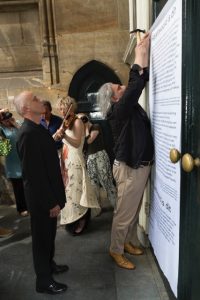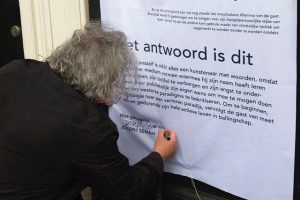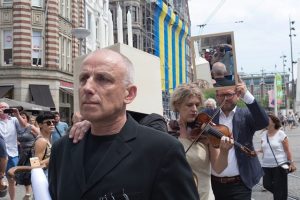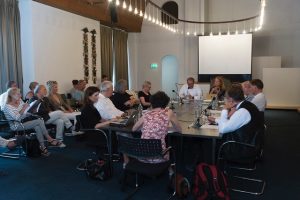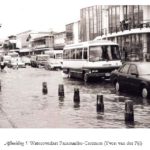Socialism For The Rich, Capitalism For The Poor: An Interview With Noam Chomsky
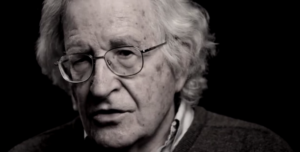 The United States is rapidly declining on numerous fronts — collapsing infrastructure, a huge gap between haves and have-nots, stagnant wages, high infant mortality rates, the highest incarceration rate in the world — and it continues to be the only country in the advanced world without a universal health care system. Thus, questions about the nature of the US’s economy and its dysfunctional political system are more critical than ever, including questions about the status of the so-called American Dream, which has long served as an inspiration point for Americans and prospective immigrants alike. Indeed, in a recent documentary, Noam Chomsky, long considered one of America’s voices of conscience and one of the world’s leading public intellectuals, spoke of the end of the American Dream. In this exclusive interview for Truthout, Chomsky discusses some of the problems facing the United States today, and whether the American Dream is “dead” — if it ever existed in the first place.
The United States is rapidly declining on numerous fronts — collapsing infrastructure, a huge gap between haves and have-nots, stagnant wages, high infant mortality rates, the highest incarceration rate in the world — and it continues to be the only country in the advanced world without a universal health care system. Thus, questions about the nature of the US’s economy and its dysfunctional political system are more critical than ever, including questions about the status of the so-called American Dream, which has long served as an inspiration point for Americans and prospective immigrants alike. Indeed, in a recent documentary, Noam Chomsky, long considered one of America’s voices of conscience and one of the world’s leading public intellectuals, spoke of the end of the American Dream. In this exclusive interview for Truthout, Chomsky discusses some of the problems facing the United States today, and whether the American Dream is “dead” — if it ever existed in the first place.
C.J. Polychroniou: Noam, in several of your writings you question the usual view of the United States as an archetypical capitalist economy. Please explain.
Noam Chomsky: Consider this: Every time there is a crisis, the taxpayer is called on to bail out the banks and the major financial institutions. If you had a real capitalist economy in place, that would not be happening. Capitalists who made risky investments and failed would be wiped out. But the rich and powerful do not want a capitalist system. They want to be able to run the nanny state so when they are in trouble the taxpayer will bail them out. The conventional phrase is “too big to fail.”
The IMF did an interesting study a few years ago on profits of the big US banks. It attributed most of them to the many advantages that come from the implicit government insurance policy — not just the featured bailouts, but access to cheap credit and much else — including things the IMF researchers didn’t consider, like the incentive to undertake risky transactions, hence highly profitable in the short term, and if anything goes wrong, there’s always the taxpayer. Bloomberg Businessweek estimated the implicit taxpayer subsidy at over $80 billion per year.
Much has been said and written about economic inequality. Is economic inequality in the contemporary capitalist era very different from what it was in other post-slavery periods of American history?
The inequality in the contemporary period is almost unprecedented. If you look at total inequality, it ranks amongst the worse periods of American history. However, if you look at inequality more closely, you see that it comes from wealth that is in the hands of a tiny sector of the population. There were periods of American history, such as during the Gilded Age in the 1920s and the roaring 1990s, when something similar was going on. But the current period is extreme because inequality comes from super wealth. Literally, the top one-tenth of a percent are just super wealthy. This is not only extremely unjust in itself, but represents a development that has corrosive effects on democracy and on the vision of a decent society.
What does all this mean in terms of the American Dream? Is it dead?
The “American Dream” was all about class mobility. You were born poor, but could get out of poverty through hard work and provide a better future for your children. It was possible for [some workers] to find a decent-paying job, buy a home, a car and pay for a kid’s education. It’s all collapsed — and we shouldn’t have too many illusions about when it was partially real. Today social mobility in the US is below other rich societies.
Is the US then a democracy in name only?
The US professes to be a democracy, but it has clearly become something of a plutocracy, although it is still an open and free society by comparative standards. But let’s be clear about what democracy means. In a democracy, the public influences policy and then the government carries out actions determined by the public. For the most part, the US government carries out actions that benefit corporate and financial interests. It is also important to understand that privileged and powerful sectors in society have never liked democracy, for good reasons. Democracy places power in the hands of the population and takes it away from them. In fact, the privileged and powerful classes of this country have always sought to find ways to limit power from being placed in the hands of the general population — and they are breaking no new ground in this regard. Read more
Mariell Juhlin ~ The Difficult Nature Of Housing
It is truly a tall order to fully understand the contribution of housing to growth, welfare and prosperity among individuals and societies. The field is generally under-researched and under-funded. Where there is research, it is often concentrated on a specific issue within a topical area such as: the link between labour market mobility and housing availability; the effect of poor housing on individual health outcomes, or the macro-economic risk of increased household indebtedness.
Rarely does housing research capture, or attempt to capture, the full socio-economic and dynamic effects of housing on individuals and society. Still, housing is affected by, and in turn affects, most other societal areas from architecture to private sector development. An obvious explanation is that housing markets are too complex to be described by unitary market equilibrium models and would require an empirical basis for submarket modelling. This, however, has not been embraced in applied research to any greater extent and, when it’s been done, it has been subject to inconsistency. The likely implication of this is that the effects of a functional, or indeed a dysfunctional, housing market may be both under-estimated and under-valued in literature and policy-research.
Read more: https://www.socialeurope.eu/difficult-nature-housing/#
The Guardians Of The Door ~ Joseph Semahs antwoord op Luther
Op donderdag 22 juni ben ik getuige van een bijzondere gebeurtenis bij De Nieuwe Kerk: een performance in het kader van Reis in de Tijd (opening 13 juli 2017), een tentoonstelling over de reformatie met Maarten Luther als een van onderwerpen.
Vanaf de Dam komt een opmerkelijk gezelschap schuifelend in beweging. Centrale figuur is kunstenaar Joseph Semah met een houten kist op zijn hoofd waarin tien kaarsen zijn gestoken. Op zijn tocht op weg naar de nooduitgang (voorheen katholieke ingang) van De Nieuwe Kerk wordt hij begeleid door een klein gezelschap: performancekunstenaar Peter Baren, de koploper van de stoet, is zijn leidsman op wie hij moet vertrouwen tijdens de wandeling van de Dam naar de Nieuwe Zijdsvoorburgwal. Hij kan immers niks zien door de kist. Achter Semah volgen violiste Anastasia Kozlova, die prachtige muziek van Bach ten gehore brengt en Emile Schrijver, directeur van het Joods Historisch Museum, die een spiegel boven zijn hoofd torst. Eenmaal aangekomen bij De Nieuwe Kerk ontdoet Semah zich van de kist en haalt hij zijn pamflet Dit is het antwoord tevoorschijn en spijkert deze op de kerkdeur. Een bijzonder moment: een Israëlisch-joodse kunstenaar, geboren in Bagdad, woonachtig in Amsterdam, reageert op Luther, de man die volgens de overlevering 95 stellingen op de Slotkerk van Wittenberg heeft gespijkerd, waarmee de reformatie is begonnen, de kerkelijke hervorming waaruit het protestantisme is ontstaan. Alhoewel dat spijkeren een mythe blijkt, blijft staan dat Luther behalve een hervormer een fervente antisemiet was. Alleen al daarom is Semahs rituele handeling van historische betekenis.
Welke tekst spijkert Semah op de kerkdeur? Het pamflet begint met de volgende woorden: “Zo lang het westerse paradigma volhardt in het tentoonstellen van een kunstwerk als iets dat gelezen moet worden, dienen we ons bewust te zijn van, en bekend te zijn met de geschiedenis van het christendom. In dit geval – of we het nu wel of niet van belang vinden dat westerse paradigma te typeren als eindeloze poging de oorspronkelijke beweging van het christendom te transformeren in een hedendaagse filosofie – blijft het lezen van kunstwerken in de publieke ruimte een schimmige maskerade uit een ver cultureel verleden.” Semah benadrukt verder dat kunstwerken binnen het westerse paradigma per definitie niet profaan zijn en stelt dat er nog altijd sprake is van een relatie tussen christelijke theologie en hedendaagse filosofie – een relatie die echter wordt toegedekt. Verder heeft hij het over ‘het onoplosbare dilemma van de gast’ – hij omschrijft de gast als de kunstenaar, als de joodse kunstenaar in ballingschap – die opereert in een christelijke wereld maar niettemin zijn ‘hoogstpersoonlijke wijze van lezen’ heeft behouden en gedreven blijft door ‘de Nostalgie naar een verloren paradijs.’ Read more
Het antwoord is dit
On Friendship / (Collateral Damage) II – The Guardians of the Door is op 22 juni gestart met een processie (Peter Baren, Joseph Semah, Anastasia Kozolkov, en Emile Schrijver ) naar de kerkdeur van De Nieuwe Kerk, waar Joseph Semah zijn antwoord aan Luther 500 jaar na dato aan de kerkdeur spijkerde:
Het antwoord is dit
Zo lang het westers paradigma volhardt in het tentoonstellen van een kunstwerk als iets dat gelezen moet worden, dienen we ons bewust te zijn van, en bekend te zijn met de geschiedenis van het christendom. In dit geval – of we het nu wel of niet van belang vinden dat westers paradigma te typeren als eindeloze poging de oorspronkelijke beweging van het christendom te transformeren in een hedendaagse filosofie – blijft het lezen van kunstwerken in de publieke ruimte een schimmige maskerade uit een ver verleden cultuur. Het is hoe dan ook evident dat van de kunstenaars die deel uitmaken van het westers paradigma er niet zoiets bestaat als een profaan werk. Dat wil zeggen dat alle kunstwerken die getoond worden in publieke ruimten, altijd geritualiseerd zijn en verbonden met een bepaalde ‘heilige’ tekst die ergens werd gevonden; een willekeurige en daarom vervangbare gevonden tekst.
In dit verband zij opgemerkt dat welk kunstwerk dan ook getoond wordt in de publieke ruimte, dit zowel een noodzakelijkheid als een onmogelijkheid is, een gelijktijdige aanwezigheid van iets leesbaars en iets schimmigs.
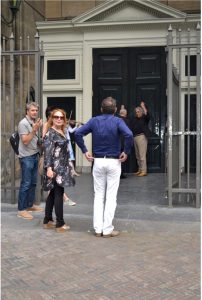 Ongetwijfeld is het dat schimmige wat die fascinerende werking doet uitgaan als van een verte en waardoor het westers paradigma afhankelijk wordt van de voortdurende productie van kunstwerken. Maar vooral verklaart het de aangeboren obsessie van kunstenaars met politieke kwesties.
Ongetwijfeld is het dat schimmige wat die fascinerende werking doet uitgaan als van een verte en waardoor het westers paradigma afhankelijk wordt van de voortdurende productie van kunstwerken. Maar vooral verklaart het de aangeboren obsessie van kunstenaars met politieke kwesties.
Voor de kunstenaar werd het daardoor namelijk vanzelfsprekend om nog eens te versluieren wat al schimmig was. Dit moeten we in het achterhoofd houden omdat dit het morele dilemma blijkt te zijn geworden als we het gaan hebben over lezen in publieke ruimten. Lezen maakt immers deel uit van onze fascinatie voor de belofte van de kunstenaar om de verbindingslijnen tussen hedendaagse filosofie en christelijke theologie onzichtbaar te maken. Hoewel deze belofte van de kunstenaar ons dichtbij de ontchristelijking van het westers paradigma brengt, is echter het rug aan rug, resulterend in een eindeloze onduidelijkheid over hoe we moeten beginnen, bij christelijke theologie dan wel hedendaagse filosofie.
En op de achtergrond zien we nog steeds het onoplosbare dilemma van de gast. Enerzijds wordt hij gedwongen om te zwijgen over zijn hoogstpersoonlijke wijze van lezen, terwijl hij aan de andere kant gebruik maakt van christelijke tactiek om opgemerkt te worden zonder te worden ontdekt.
Het antwoord is dit
De gast in onszelf is vóór alles een kunstenaar met woorden, omdat woorden het medium vormen waarmee hij zijn naam heeft leren verheimelijken, zijn twijfel verbergen en zijn gehalte aan angst benaderen door publiekelijk zijn eigen wens om mee te mogen doen binnen het westers paradigma te bekritiseren. Nostalgie naar een verloren paradijs belaagt de gast van meet af aan en gedurende zijn hele actieve leven in ballingschap.
Was getekend JOSEPH SEMAH
500 Jaar Reformatie ~ On Friendship / (Collateral Damage) II ~ The Guardians Of The Door (Juni-December 2017)
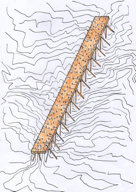
In 2017 wordt 500 jaar Reformatie groots herdacht. Stichting Metropool Internationale Kunstprojecten en beeldend kunstenaar Joseph Semah organiseren het artistiek, filosofisch project On Friendship / (Collateral Damage), deel II – The Guardians of The Door met kunst, performances, rondetafelgesprekken, lezingen en een publicatie. Een kritische reflectie op het beeld van Luther als ‘superstar’ en zijn betekenis toen en nu.
De Nieuwe Kerk, Joods Historisch Museum, Stedelijk Museum en het Goethe-Institut (allen Amsterdam) zijn partners in het project.
De Nieuwe Kerk
Reis in de tijd met interventie van Joseph Semah
500 jaar reformatie: een hedendaags antwoord op de 95 stellingen van Luther
Installatie, performance en rondetafelgesprek
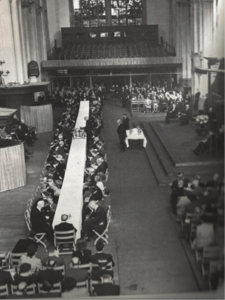
Twee eerste schetsen voor een meterslange tafel met 95 eieren, 5000 meter wit garen, van Joseph Semah en de historische foto van de Wereldraad van Kerken in De Nieuwe Kerk 1948. Datum: Reis in de Tijd met Joseph Semah. Tentoonstelling:donderdag 13 juli – zondag 27 augustus 2017.
In 1517 zou Luther zijn stellingen op de kerkdeur hebben getimmerd. Voor de christelijke kerk en ook De Nieuwe Kerk heeft dit grote gevolgen gehad. De Nieuwe Kerk werd protestant, maar was in 1948 ook weer de kerk waar de oecumene voet aan de grond kreeg. De Wereldraad van Kerken vergaderde er voor het eerst.
500 jaar na dato zal Joseph Semah reageren op Luthers gedachtegoed en de betekenis ervan in zijn tijd en nu, waarbij hij, uiteraard ook de antisemitische teksten van deze kerkhervormer ‘meeneemt’. Voor De Nieuwe Kerk maakt hij een installatie en een performance met o.a. religieuze vertegenwoordigers. In zekere zin een verlaat antwoord van de kunst, zolang geweerd in de kerk.
Joods Historisch Museum
In het Joods Historisch Museum worden kunstwerken van Joseph Semah getoond uit de serie The Wandering Jew / The Wondering Christian en wordt een Gallery-talk georganiseerd.
Datum: half sept-december 2017
Het Stedelijk Museum
Voor het Stedelijk Museum zal Joseph Semah reageren op de collectie middels vijf performances, een workshop en een rondetafelgesprek.
Datum: 20, 21, 22 oktober 2017
Goethe-Institut
Vijf geheime installaties en gesprek.
Datum: najaar 2017
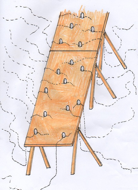 Najaar 2017. Publicatie: The Guardians Of The Door
Najaar 2017. Publicatie: The Guardians Of The Door
Over de betekenis van Luther toen en nu.
Met teksten van:
Joseph Semah, beeldend kunstenaar; Dr. Arie Hartog, directeur Gerhard-Marcks-Haus in Bremen; Prof. Dr. Emile G.L. Schrijver, alg. dir. Joods Historisch Museum Amsterdam en Joods Cultureel Kwartier; Prof. Mr. Egbert Dommering, emeritus-hoogleraar informatierecht UvA; Prof. Dr. Ton Nijhuis, wetenschappelijk directeur van het Duitsland Instituut Amsterdam; Linda Bouws, stichting Metropool Internationale Kunstprojecten; Prof. dr. F.M. (Maarten) Doorman, Bijzonder Hoogleraar Historische cultuur van Duitsland; Dr. Margriet Schavemaker, Manager Educatie, Interpretatie en Publicaties Stedelijk Museum Amsterdam; Jan Vos- LL.B MaLic Hans Rutten; Rick Vercauteren, conservator Stedelijke Kunstcollectie Venlo en Felix Villanueva.
Voor info: lindabouws@gmail.com
On Friendship / (Collateral Damage) II – The Guardians of the Door wordt mogelijk gemaakt door een bijdrage van Mondriaan Fonds, Gravin van Bylandt Stichting, Haëlla Stichting, de Vrijzinnige Fondsen en Kerk en Wereld.
Announcement February 2017 ~ Truth or Dare 2017
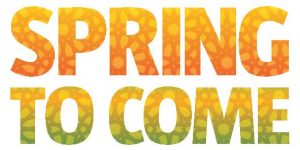 Spring To Come and Metropool International Art Projects/Studio Meritis MaKOM have announced their plans to team up and organise the 2017 festival TRUTH OR DARE.
Spring To Come and Metropool International Art Projects/Studio Meritis MaKOM have announced their plans to team up and organise the 2017 festival TRUTH OR DARE.
Spring to Come is a platform through which researchers, activists and thinkers from the MENA region and Europe aim to explore the best ways forward in creative collaboration and examine the possibility of shaping innovative institutions beyond the current polarized frames. Metropool International Art Projects / Studio Meritis MaKOM is an organisation which stages artistic and cultural activities around core issues currently affecting Europe’s societies, and helps to foster independent thinking, networking and co-production.
Inspired by the success of the first edition of the Spring to Come festival in April 2016, this year we will turn to the urgent subject of ‘truth finding’. The debate on ‘post truth’ society – which currently dominates the news – is not new or an exclusively Western phenomenon. For many citizens in the Middle East and North Africa (the MENA region), living in a ‘post-truth environment’ has been a harsh reality for some time already. In Truth or Dare, we will connect with and draw on this extensive MENA experience with ‘alternative facts’, ‘conspiracy theories’, ‘fake news’, ‘identity politics’ and ‘polarization’ and take it as the starting point for our exchanges, explorations and reflections.
We live in a world in which the biggest loud-mouth seems to get all the attention. Facts, news, truthclaims appear more and more subject to political manipulation and polarization. They turn increasingly into sources of fierce social conflicts. All around, credibility is out of the window. Not much can be taken for granted, anymore. Legitimacy on the basis of experience or expertise is rapidly lost. It is unclear who represents whom or what.
Many public debates focus on the messenger rather than the message; the public outcry more about the ‘tone’ of the debate than about the contents of the debate itself. This is a trend which in itself is also cause of further dispute and polarization.
Paradoxes reign. With the arrival of social media outlets, the public arena looks opener and more accessible than ever. This is, however, deceptive. Not everybody has the same access to media channels. Rapid technological change is accompanies by new inequities, in access to financial possibilities and networks. Besides inequalities in terms of money, power inequalities are also still there. On top of explicit differences in social or political status, people’s public ‘playing field’ is often based on factors which remain more implicit: etnicity, religion, or education. People’s social ‘status’ is no longer so clear-cut.
In Truth or Dare, participants from the MENA region and Europe will engage in an international festival in which we will explore new concepts and ways of thinking together and test alternative, sustainble ways of collaborating. A series of digital publications on post-truth society will be launched in the Rozenberg Quarterly, Studio Meritis MaKOM. Throughout, we will draw on innovative research and artistic expressions.
Contact:
For Spring to Come, Faïrouz ben Salah, Fairouzbensalah@gmail.com
For Studio Meritis MaKOM, Linda Bouws, lindabouws@gmail.com


